A peaceful fish, the Hillstream Loach coexists harmoniously with other species, settling usually near the bottom of the tank, fitting in well with diverse aquatic communities. With proper care and water conditions, their presence is both enchanting and beneficial, making them a favored choice among aquarists.
| Attribute | Information |
|---|---|
| Scientific name | Sewellia lineolata |
| Common name | Chinese Hillstream Loach |
| Family | Balitoridae |
| Usual size in fish tanks | 2.5 inches (6.3 cm) |
| Recommended pH range | 6.8 – 7.5 |
| Recommended water hardness (dGH) | 5 – 12 dGH |
| Recommended temperature | 68°F – 78°F (20°C – 26°C) |
| Reproduction | Egg scatterer, difficult to breed in captivity |
| Origin | China, Laos, Vietnam |
| Temperament to own species | Peaceful |
| Temperament toward other fish | Peaceful |
| Usual place in the tank | Bottom and mid-level |
| Lifespan | 5 – 8 years |
| Tank size requirement | 20 gallons |
| Filtration system | Moderate to strong flow, good filtration required |
| Sexual dimorphism | Males have thicker pectoral fins compared to females |
| Substrate cleaning | Excellent substrate cleaner, prefers clean substrates |
Sexual dimorphism is not readily apparent in this species, and specific identification of males and females often hinges on the details provided at the time of acquisition. Although their breeding practices in the wild are fascinating, their reproduction in home aquariums remains a challenge.
Scientific Name
The Butterfly Hillstream Loach, classified under the family Balitoridae, is scientifically recognized as Beaufortia kweichowensis. In certain taxonomic classifications, this species is further identified as Beaufortia leverreti kweichowensis. Known for its distinct morphology, this loach species has an elongated and flattened body shape which is an adaptation for its life in high-velocity streams. The striking morphological features, including a suckermouth surrounded by barbels and the mottled brown camouflage patterns, enable it to efficiently graze on algae and stay anchored against strong currents.
| Taxonomy | Classification |
|---|---|
| Family | Balitoridae |
| Scientific Name | Beaufortia kweichowensis |
| Alternative Name | Beaufortia leverreti kweichowensis |
| Common Names | Butterfly Hillstream Loach, Chinese Hillstream Loach |
| Native Habitat | Fast-flowing streams, China |
| Body Shape | Elongated, flattened |
| Lifespan | Up to 6 years |
| Size | Up to 3 inches (7.5 cm) |
| Temperament | Peaceful |
Average Size
The Chinese Hillstream Loach, with its intriguing flattened body, is not just admired for its unique appearance but also for its modest size. On average, adults of this species range between 2.5 and 3.5 inches (5 – 7.5 cm) in length, easily fitting into the confines of home aquariums. Enthusiasts typically acquire these creatures when they are juveniles, at sizes ranging from 1 to 2 inches (2.5 – 5 cm).
In the controlled environment of an aquarium, the Butterfly Hillstream Loach (Beaufortia sp.) can reach a maximum size of about 3.2 inches (8.00 cm), ideal for owners who appreciate the presence of subtle swimmers. Comparatively, the species averages almost 2 – 3 inches (5 – 7 cm) when discussing the diverse types of hillstream loaches.
| Hillstream Loach Type | Average Adult Size | Average Purchase Size | Maximum Size in Aquarium |
|---|---|---|---|
| Chinese Hillstream Loach | 2.5 – 3.5 inches (5 – 7.5 cm) | 1 – 2 inches (2.5 – 5 cm) | 3.2 inches (8 cm) |
| Butterfly Hillstream Loach (Beaufortia sp.) | Almost 2 – 3 inches (5 – 7 cm) | N/A | N/A |
This table provides a clear overview of the size expectations for these peaceful aquarium residents.
Lifespan
Hillstream loaches are a rewarding addition to the home aquarium, not least because of their potential longevity. In captivity, these agile swimmers typically enjoy a lifespan of 5-8 years. However, certain individuals, when provided with impeccable water conditions and care, have been known to exceed this range, demonstrating the species’ capacity for greater longevity under ideal circumstances.
Careful attention to water quality and weekly water parameters is crucial. With diligent care and stable environmental conditions, these peaceful fish can reach, or even surpass, the upper end of their lifespan, delighting their caretakers for up to a decade.
| Factors Influencing Lifespan | Examples |
|---|---|
| Environmental Conditions | Quality water flow, weekly water changes |
| Diet | Algae, plant matter, brine shrimp |
| Genetics | Variability in lifespans among individuals |
Natural Habitat
The Chinese Hillstream Loach, a delightful inhabitant of freshwater ecosystems, finds its roots in the pristine waters of China and Taiwan. These loaches are uniquely adapted to environments with rapid water currents, setting up residence primarily in rocky, swift-flowing streams. The bustling waterways provide an ample surface for the essential algae growth that sustains them.
In their native habitats, Hillstream Loaches are accustomed to a very specific set of conditions, including cool water temperatures and a pH range that hovers between 6.5 and 8.0, ensuring their world is well-oxygenated despite the water’s low dissolved oxygen levels. The rocky terrains they prefer are more than just homes—they’re also bustling with biofilm and algae, cornerstones of the loach’s diet.
To flourish, these loaches need more than just flowing water; they require a landscape rich with hideaways. Crevices in the streambed and small, cave-like spaces among the gravel act as safe havens where they can retreat from the ever-present current.
| Natural Habitat Needs | Description |
|---|---|
| Water Temperature | Cool |
| pH Range | 6.5 – 8.0 |
| Dissolved Oxygen Levels | Low, with high water flow for oxygenation |
| Environment | Rocky areas with crevices, gravel, and space for algae to grow |
| Food Source | Algae, biofilm |
By mimicking these conditions, aquarists can create a sanctuary that closely mirrors the Hillstream Loach’s natural world, a critical step in nurturing the species in a home aquarium.
Appearance
The Hillstream Loach boasts a distinctive body shape that is both elongated and laterally compressed. This sleek physique, adorned with small, smooth scales, is a telltale sign of this species’ adaptation to the rapid currents of its habitat. Not only are they streamlines, but their bodies also serve as a canvas for nature’s artwork.
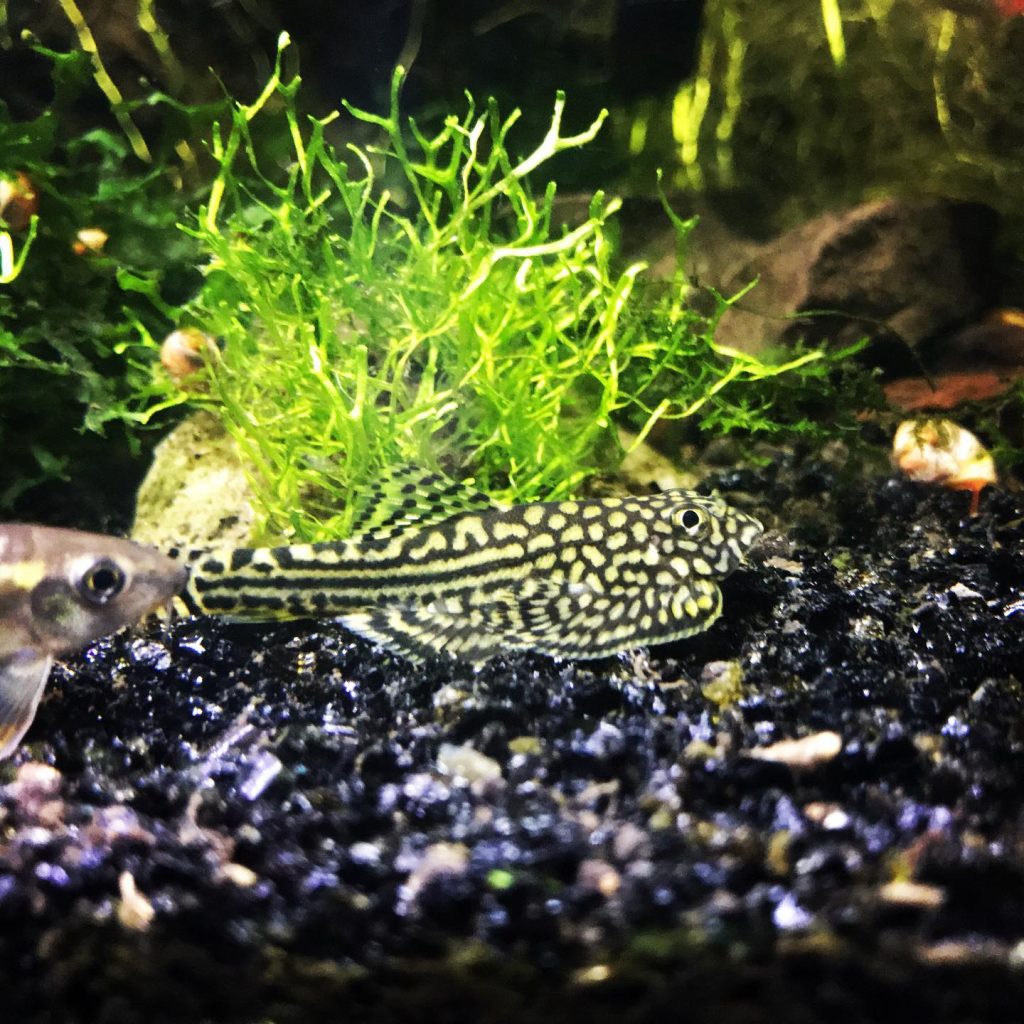
Positioned atop their head, small eyes gaze outwards, a clear adaptation for their fast-moving aquatic environment. These eyes complement a long dorsal fin that trails down the length of their body, coupled with well-developed ventral fins. This fin combination grants them exceptional stability amidst the swift waters they call home.
Their coloring is subtle yet striking—a base of gentle grayish yellow comes alive with a network of thick black stripes. These erratic markings, unique to each individual, haphazardly weave across their body, contributing to their common misidentification. The hillstream loach’s unique look is often mistaken for other species, like catfish or miniature stingrays, though they are distinct in their own right.
| Feature | Description |
|---|---|
| Body Shape | Elongated and laterally compressed with small, smooth scales |
| Eyes | Small, located towards the top of the head |
| Fins | Long dorsal fin; well-developed ventral fins |
| Coloration | Light grayish/yellow base with random black stripes |
| Misidentification | Can be mistaken for catfish or mini-stingrays |
Despite the confusion, noting their peaceful nature and precise adaptation reveals the true identity of these intriguing creatures: the peaceful and flowing-water loving Hillstream Loach.
Behavior & Temperament
The Chinese Hillstream Loach, known for its serenity, brings harmony to aquatic environments rather than the conflicts often seen with fin nippers. The gentle nature of these creatures makes them perfect denizens for community tanks, as they focus more on clearing your tank of brown diatoms rather than snipping at tank mates. Whether they are delicately fanning their elegant dorsal fins or grazing tank walls, these loaches maintain a demeanor that promotes peace within their aquatic realm.
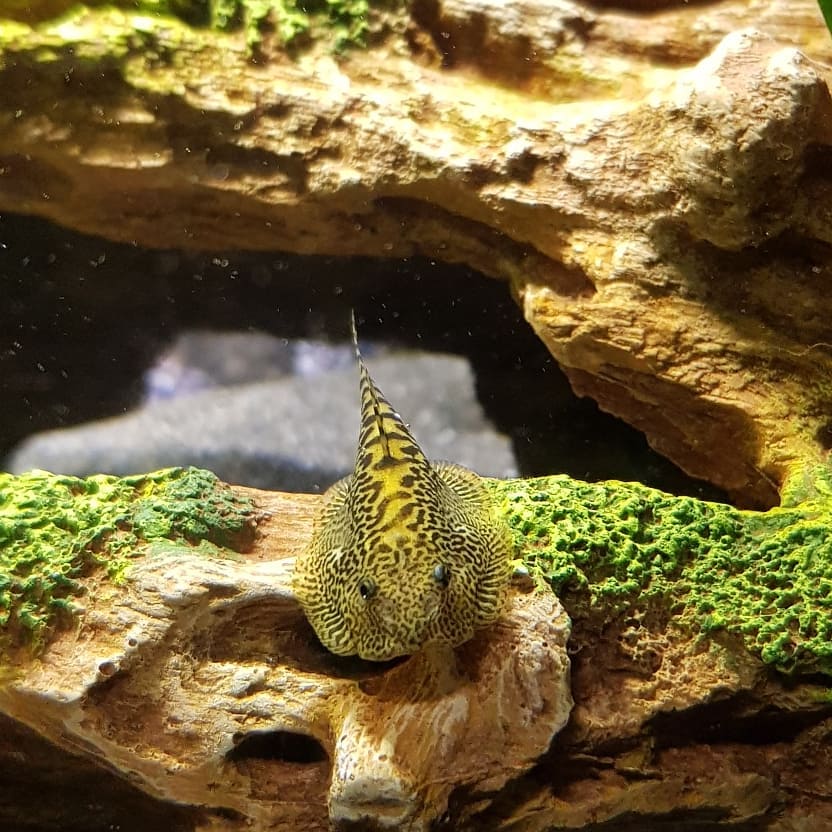
Are Chinese Hillstream Loach Fin Nippers?
Chinese Hillstream Loaches stand out as model citizens in the aquarium landscape. They are not known to be fin nippers, preferring instead to spend their time as diligent algae grazers. Their absence of aggressive tendencies makes them the ideal choice for a communal setting. Paired with their non-aggressive disposition, their physical attributes are designed for stability within their environment, not combat or nipping.
Are Chinese Hillstream Loach Aggressive To Each Other & Other Fish?
Within their kind, Chinese Hillstream Loaches may occasionally chase one another, a behavior often seen when establishing hierarchy in their environment. However, this chasing is short-lived and does not culminate in physical harm. As tranquil inhabitants, they reflect the same courtesy towards their tank mates, making aggression towards other fish an exceptionally rare sight. It is their peaceful essence that defines their interactions rather than conflict or dominance.
Are Chinese Hillstream Loach Friendly To Each Other & Other Fish?
Chinese Hillstream Loaches exhibit a comradery that is heartwarming to observe. They thrive in the company of their conspecifics — interacting, schooling, and foraging together. They also present a charming dynamic with other non-aggressive fish in the tank. Their cordial nature ensures that these bottom dwellers contribute to the cleanliness of their habitat while coexisting harmoniously with every other peaceful creature that calls the aquarium home.
Are Chinese Hillstream Loach Schooling Fish?
Indeed, Chinese Hillstream Loaches are schooling fish by nature. Witnessing them swim in synchronized groups is an aquatic ballet that mesmerizes onlookers. To maintain their comfort and encourage natural behavior, it is suggested that they should be kept in groups of five or more. This social structure enables them to exhibit their full repertoire of behaviors — a captivating spectacle of synchronized scavenging and exploration.
Can You Have Just One Chinese Hillstream Loach In The Tank?
While it is possible to keep a single Chinese Hillstream Loach, it does not align with their natural predisposition towards group living. A solo loach may survive, but it will likely not display the same level of activity or confidence seen in groups. For the well-being of these captivating creatures, creating an environment that resembles their native habitats filled with the presence of their own kind is essential.
Do Chinese Hillstream Loach Need To Be In Groups?
It is not just a preference, but a necessity for Chinese Hillstream Loaches to be in groups for a fulfilling aquarium life. A minimum collective of 3-4 specimens is recommended, but a larger group can significantly enhance their environmental satisfaction. Social interaction, shared foraging, and the comfort they derive from schooling are all fundamental needs for these beautiful fish. The communal energy of a group provides a platform for their personalities to shine and for their natural behaviors to emerge.
| Social Requirement | Minimum Group Size | Tank Size | Behavior in Groups |
|---|---|---|---|
| Hillstream Loaches | 3-4 Specimens | 30-Gallon for 3-4 | Active, Natural, Social |
Food & Diet
Chinese hillstream loaches, with their affinity for benthic algae, find a significant portion of their diet comes from algae growth and biofilm found on solid surfaces in their native habitats. These diligent grazers will scour their environment for these nutritious layers, making them invaluable for tank maintenance.
In captivity, they require this natural food source to thrive, emphasizing the need for a well-established aquarium. To supplement their diet, it’s beneficial to provide high-quality dry foods such as algae wafers, which mimic their natural consumption pattern. If a tank doesn’t naturally foster sufficient algae, a higher intensity light can stimulate its growth, ensuring these peaceful fish receive the nutrition they crave.
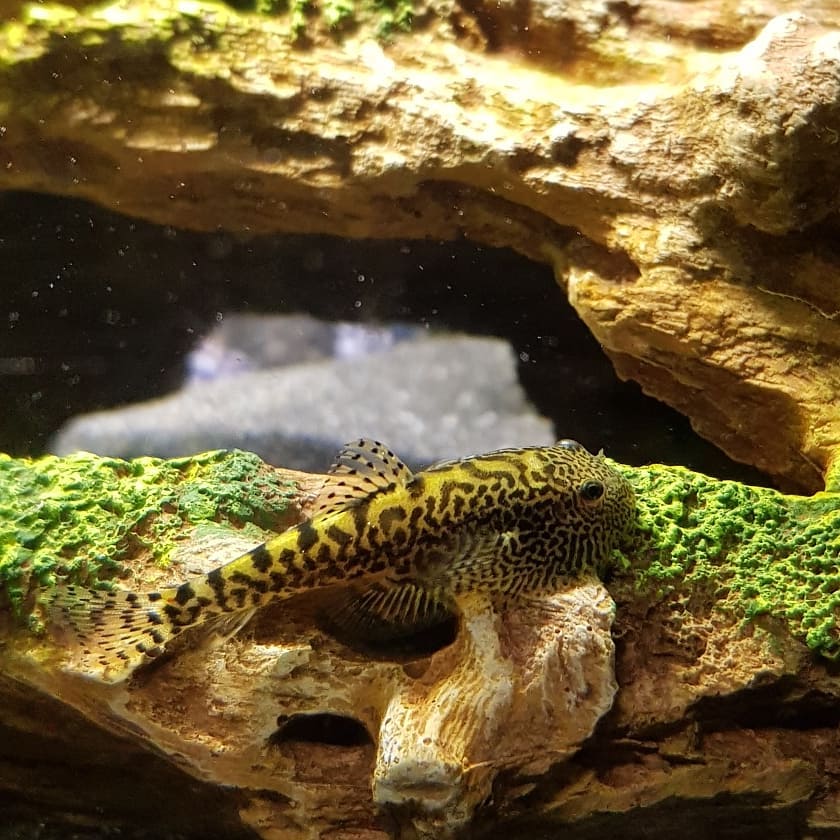
Do Chinese hillstream loach Eat Shrimp?
Regarding their interaction with shrimp, it is a rare occurrence for Chinese hillstream loaches to prey on these creatures due to their predominately algae-based diet. Their scavenging nature will generally steer them away from live shrimp, though the possibility of predation should not be entirely disregarded, particularly if the shrimp are significantly smaller in size. Creating a shrimp-safe environment can be achieved by incorporating dense plant life, which offers refuge and reduces the chances of opportunistic feeding. Ensuring that the loaches are well-fed with their preferred diet will minimize potential interest in shrimp as a food source.
Do Chinese hillstream loach Eat Bloodworms?
Bloodworms stand as a protein-packed choice that can enrich the overall health of Chinese hillstream loaches. As occasional treats, live or frozen bloodworms can diversify the loaches’ diet. While a balanced omnivorous diet is crucial for these loaches, including a controlled amount of such meaty foods can evoke their natural foraging instincts and contribute to a rounded nutritional profile. This, paired with their staple algae-based foods, establishes a robust diet, though moderation is key to prevent any health issues that might arise from overconsumption.
Do Chinese hillstream loach Eat Mosquito Larvae?
The Chinese hillstream loach’s flexible palate will likely include mosquito larvae, as their opportunistic feeding behavior in the wild encompasses a variety of microorganisms and invertebrates. Incorporating mosquito larvae into their diet can offer a nutritional boost and serve as an enriching dietary variation.
Balanced feeding with these live foods, alongside their mainstay of algae and specialized pellets or wafers, will simulate the diverse intake they would experience in their natural waterways and benefit their overall well-being in a captive environment.
Do Chinese hillstream loach Eat Planaria?
An omnivore by nature, the Chinese hillstream loach will not shy away from planaria if present in their environment. Their diet in the wild is composed of algae, biofilm, and the microfauna that reside within it, which includes various worm-like organisms. While planaria are not a dietary necessity, their incidental consumption as part of the loaches’ scavenging activities can occur, reflective of their adaptable feeding habits within a well-established aquatic ecosystem.
Do Chinese hillstream loach Eat Plants?
Chinese hillstream loaches focus their attention on algae and biofilm rather than living aquarium plants. Plant matter does not form a significant part of their diet; however, they may occasionally nibble on soft, decaying plant tissue as part of their foraging.
For optimal health, their dietary regime should comprise primarily of algae growth, supplemented with pellets, wafers, and select meaty foods that offer a closer approximation to their natural dietary preferences.
| Dietary Component | Role in Diet | Feeding Suggestions |
|---|---|---|
| Algae and Biofilm | Primary food source | Promote tank algae growth; provide algae wafers |
| Meaty Foods (Bloodworms, Tubifex) | Supplemental | Offer as occasional treats; sourced live or frozen |
| Vegetable Foods | Secondary source | Algae wafers; blanched vegetables like spinach or kale |
| Shrimp and Planaria | Incidental | Natural occurrence; ensure primary diet is sufficient |
| Light Intensity | Algae growth aid | Increase as needed to promote algae proliferation |
Sexing: Male vs Female
Identifying the sex of Hillstream Loaches can be a subtle task as they lack clear sexual dimorphism. Generally, both male and female loaches sport similar colors and fin shapes, making differentiation difficult. However, enthusiasts have noted that male Hillstream Loaches may possess slightly jagged outlines on their pectoral fins near the “shoulders”. Females, on the other hand, tend to have a broader head and fuller body shape.
When it comes to juvenile hillstream loaches, determining sex is even more challenging, which is why it is wise to keep a group of six or more to increase the chance of having both sexes for breeding purposes. They typically reach sexual maturity around six months—another crucial factor to consider if breeding is the goal.
| Characteristic | Male Hillstream Loach | Female Hillstream Loach |
|---|---|---|
| Pectoral Fins | Slightly jagged edges | Smoother silhouette |
| Head Width | Narrower | Wider |
| Body Shape | Less round | Plumper |
When planning to breed these peaceful fish, patience and a careful eye are essential for distinguishing sexes and ensuring the right conditions for successful reproduction.
Chinese hillstream loach Tank Mates
The Chinese hillstream loach is renowned for its non-aggressive nature, making it an ideal companion for various tropical fish in a community tank. Their gentle disposition and self-awareness of their diminutive size allow them to seamlessly coexist without interfering with larger species.
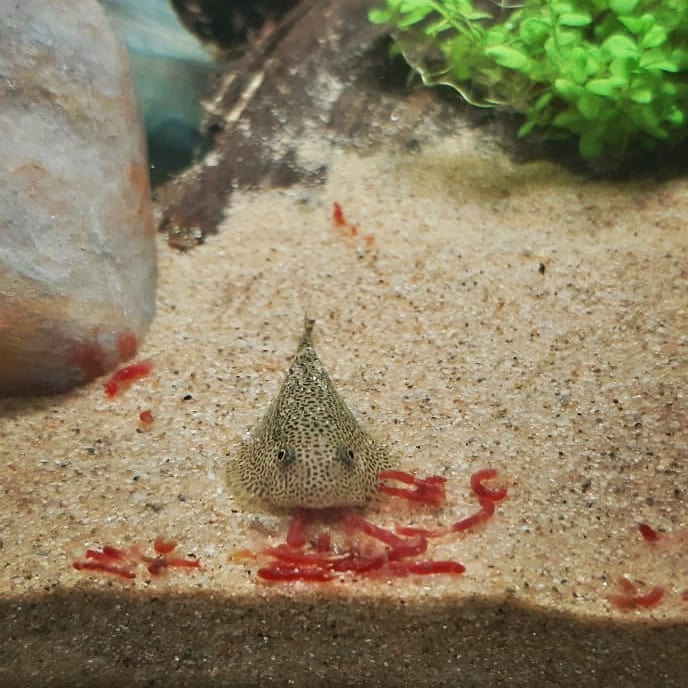
Tank mates that are particularly compatible with the Chinese hillstream loach include active, peaceful fish such as danios and rasboras. These species share a similar temperament and avoid conflicts with the loaches. However, owners should be mindful of the hillstream loach’s occasional territorial instincts. To prevent territorial disputes, it’s advisable to maintain a group of 3 to 4 loaches in a 50-gallon tank, providing ample space for each to claim their preferred spot.
Introducing new tank mates should be a gradual process. A helpful technique is to scatter food across the tank, especially in areas frequented by the loaches. This strategy helps them associate new tank mates with a food source, easing the integration process and fostering a harmonious aquatic environment.
| Tank Mate | Compatibility |
|---|---|
| Danios | High |
| Rasboras | High |
| Larger Fish | Moderate |
| Territorial Fish | Low |
Remember to introduce the Chinese hillstream loach to your community tank thoughtfully, ensuring a peaceful and enriching habitat for all its inhabitants.
Aquarium Setup
When setting up an aquarium for the Chinese hillstream loach, crucial considerations are necessary to replicate their natural habitat and cater to their specific needs. This unique species flourishes in environments that mimic the biological and physical characteristics of fast-flowing streams.
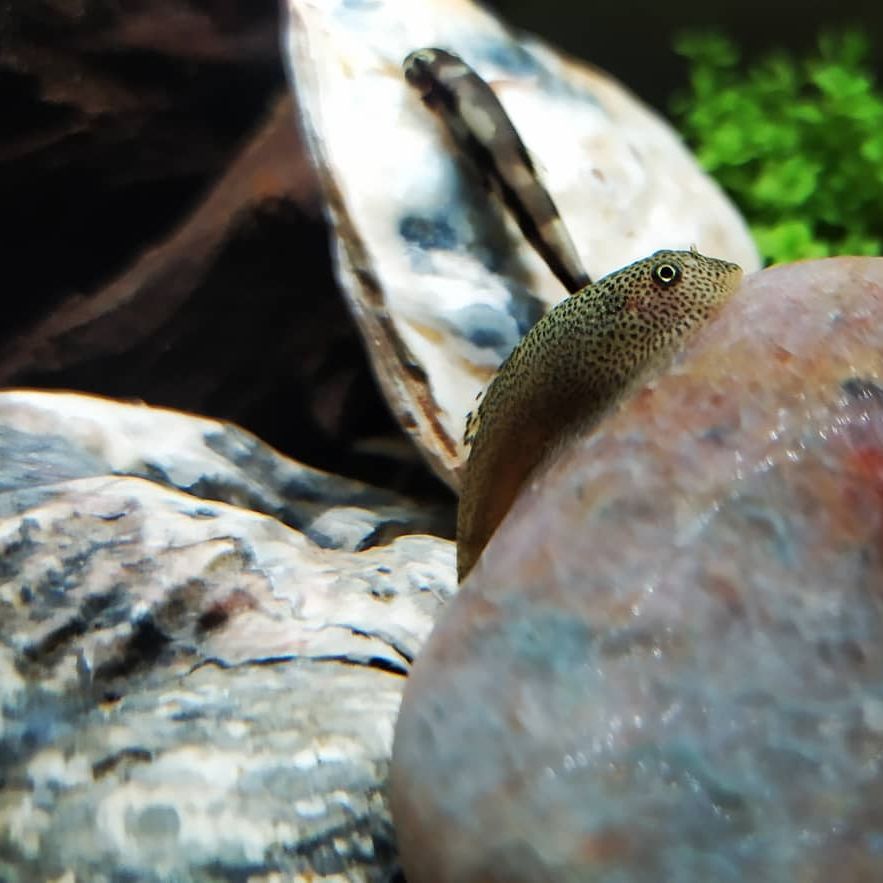
Ideal Tank Size
The spaciousness of the tank is a key factor in the well-being of hillstream loaches. For a small group, starting with a 50-liter tank is acceptable, though a minimum size of 20-30 gallons (75-113 liters) is recommended to provide ample space for swimming and oxygen exchange. Given their preference for lateral movement over vertical, opting for longer tanks with broad surfaces is ideal to support the high-oxygen, high-flow environments they are adapted to. This gives the loaches the room they need to thrive and reduces conflicts over territory.
| Minimum Tank Size | Tank Length Preference | Group Size |
|---|---|---|
| 20-30 gallons | Longer rather than tall | Small group |
Ideal Water Parameters
Creating a habitat with the right water conditions is essential for the health of Chinese hillstream loaches. The perfect pH range lies between 6.5 and 7.5, with cooler water temperatures between 76 and 82°F preferred. Medium hardness should be maintained, along with diligent monitoring of water quality to keep conditions optimal. High oxygen levels are a necessity, achievable through strong water currents, which mimic the loach’s native habitats.
| pH Levels | Water Temperature | Hardness | Oxygenation |
|---|---|---|---|
| 6.5 to 7.5 | 76 to 82°F | Medium hardness | High (strong flow) |
Filtration
The filtration system for an aquarium housing Chinese hillstream loaches should be robust, providing not only cleanliness but also high levels of oxygenation. A powerful external canister filter, possibly with a spray bar for added surface agitation, or the presence of additional powerheads, would work effectively to furnish the vigorous water movement they enjoy. Water turnover should be more than 20 times per hour to establish the vigorous, natural stream conditions in which these loaches flourish.
| Filtration Type | Water Turnover | Additional Equipment |
|---|---|---|
| Over-sized canister filter | >20x per hour | Powerheads, spray bars, etc. |
Lighting
Proper lighting is essential in an aquarium for Chinese hillstream loaches. Bright lights are beneficial for promoting algae growth, which loaches graze on. Despite that, it’s important to also provide shady areas where the loaches can find refuge from constant illumination. The lighting system should be tailored to the needs of the tank’s ecosystem, considering the needs of any plants and helping to maintain an algal balance beneficial to the loaches.
| Lighting Necessity | Algal Growth | Plant Considerations |
|---|---|---|
| Bright with shady areas | To promote growth | Adjusted to plants’ needs |
Common Possible Diseases & Prevention
Creating the perfect environment for Chinese Hillstream Loaches is instrumental in minimizing stress and disease. These loaches are sensitive to cold water and changes in conditions, so stability in their home is of utmost importance. A well-maintained tank, mimicking their natural habitat, is key to a healthy loach.
| Stress Factor | Prevention |
|---|---|
| Condition changes | Regular monitoring |
| Cold water | Stable heating system |
| Poor diet | Balanced diet provisions |
| Overcrowding | Adequate tank sizing |
Proactive prevention through environmental control and a balanced diet ensures loaches are less likely to succumb to illness. Early detection of any disease is critical and often manageable, typically isolating it to only a few individuals if action is taken swiftly.
Be cautious when introducing new elements to the tank. New fish, plants, or decorations could harbor disease. Quarantine new additions when possible and inspect them for health. A serene, well-structured habitat decreases stress, bolstering the well-being of your loaches.
Ensuring that your loaches live in a setting close to their native streams of Hong Kong means that their immune system can fight off diseases more effectively, making them healthier and more resilient.
By closely monitoring their living conditions and dietary needs, you’ll have thriving, peaceful loaches gracing your aquarium.
Breeding Chinese hillstream loach In Aquarium
Successfully breeding Chinese Hillstream Loaches requires a keen eye for their subtle sexual dimorphism. Females tend to have wider heads and more rounded bodies compared to their male counterparts. Although they are not extensively bred commercially, with patience and care, aquarists can often breed them at home.
A group of hillstream loaches should be introduced to a mature, stable aquarium teeming with natural food sources such as infusoria and algae. The tank’s layout is crucial, with rock piles and various decorations offering essential hiding spots.
The intricate habitat, mimicking their natural environment, promotes breeding behavior. To witness a successful breeding cycle, ensuring the safety of the fry is pivotal. A pre-filter sponge over the filter intake prevents the young from being drawn in.
With these guidelines, your loaches can thrive and reproduce, enriching your aquarium with their unique presence.
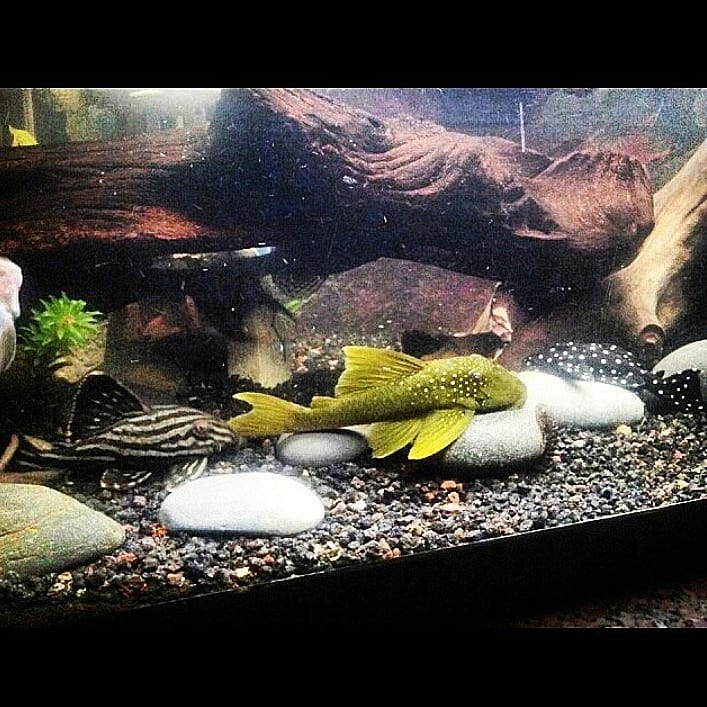
Are Chinese hillstream loach Easy To Keep?
Chinese Hillstream Loaches are intriguing and peaceful fish that can be a unique addition to a well-structured, medium-sized aquarium. They are relatively easy to keep, provided their specific environmental needs are met.
These loaches favor an aquatic landscape rich in plants, rocks, caves, and roots that offer multiple retreats. Notably, they require a strong water flow to mimic their natural habitat, which can be achieved effectively with the use of powerheads or a river manifold system.
In terms of water parameters, Hillstream Loaches thrive in soft, slightly acidic to neutral conditions, with a temperature range of 65°F to 75°F and a pH level between 6.5 and 8.0. Bright lighting should be present to promote algae growth, a mainstay in their diet, but shaded areas must also be available for the loaches to hide and rest.
They are omnivorous creatures, accepting a variety of foods that include live or frozen options such as bloodworms and daphnia, as well as dry foods like sinking pellets and algae wafers, ensuring they receive a balanced diet.
| Key Facts for Easy Upkeep | Ideal Conditions |
|---|---|
| Medium-sized planted tank | Soft, slightly acidic water |
| Powerhead/river manifold | Temperature: 65°F – 75°F |
| Caves and rocks for hiding | pH: 6.5 – 8.0 |
| Bright light for algae | Bright lights with shaded areas |
| Omnivorous diet | Live, frozen, and dry foods |
As natural bottom dwellers, they also do best with substrates that are devoid of sharp edges to prevent any harm. A fine gravel or sand substrate is recommended in order to replicate their native habitat while safeguarding their delicate bodies. With these considerations in mind, the Chinese Hillstream Loach can be an easy and rewarding pet for both novice and experienced aquarists who are committed to creating a biotope-like environment for their aquatic inhabitants.
Are Chinese Hillstream loach Sensitive To Water Changes?
Chinese Hillstream Loaches, much like other aquatic creatures, can demonstrate sensitivity to water changes, particularly if those changes affect the water quality abruptly. These loaches hail from environments characterized by clear, fast-flowing waterways, and they rely on stable conditions to keep their stress levels low. Thus, any significant swings in temperature, pH, or other water chemistry parameters should be avoided.
Regular maintenance is non-negotiable for these fish: weekly water changes of at least 30% are recommended to maintain clean water conditions and remove any accumulated waste. This routine helps replicate the loaches’ native habitats, which boast excellent water-flow and highly oxygenated water. During water changes, it is also important to match the new water’s temperature and pH to that of the existing aquarium water.
Are Chinese hillstream loach Sensitive To Ammonia?
The well-being of Chinese Hillstream Loaches is closely linked to water quality, making them particularly sensitive to ammonia — a common indicator of poor water conditions. Their natural habitats are pristine environments with low levels of waste, consequently, they have little tolerance for ammonia. Ammonia spikes, often a result of overfeeding, inadequate filtration, or insufficient water changes, can induce stress leading to health problems and even mortality.
Maintaining good water flow and robust filtration are key in preventing ammonia buildup. Optimizing tank oxygenation is equally important, as it fosters beneficial bacteria that break down toxic ammonia into less harmful substances. Regular testing for ammonia levels and diligent aquarium upkeep are fundamental practices for the health of Chinese Hillstream Loaches.
Are Chinese hillstream loach Sensitive To Copper?
Chinese Hillstream Loaches possess a refined sensitivity to copper, rendering them vulnerable to even minimal concentrations of this heavy metal. Copper, often present in tap water and certain fish medications, can be inadvertently introduced into an aquarium. The species’ delicate respiratory system, which evolved in soft and slightly acidic conditions, is easily disrupted by the presence of copper.
The implications of copper exposure include stress symptoms, illness, or even death for these loaches. It is paramount for aquarists to use water conditioners formulated to eliminate heavy metals or test the water for copper content before making it part of the aquarium environment. This vigilance in avoiding copper contamination is essential to maintaining the health and longevity of Chinese Hillstream Loaches.



